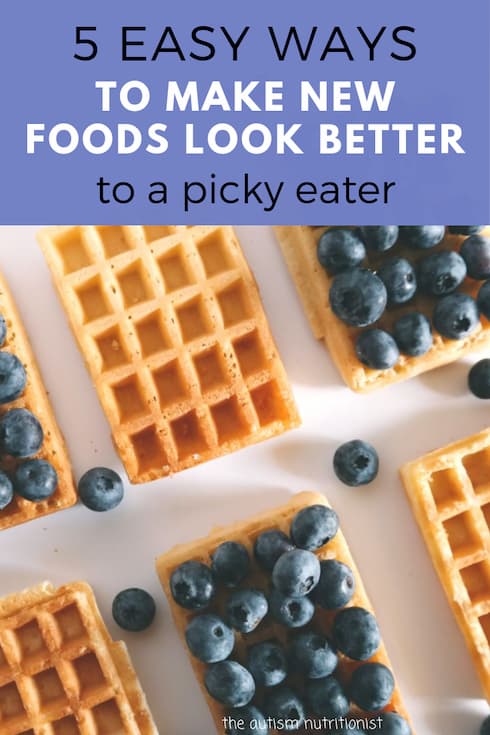
How food looks might be the first thing your child notices about a meal or snack. Visual appearance can tell your child a lot about a food’s taste or texture. This can help your child make connections and learn about new foods.
But visual appearance can also be confusing. The mind makes assumptions about food based only on look.
Children with sensory processing issues sometimes can’t interpret messages about how a food looks in the right way. Sometimes their minds take what they see and get the message that they don’t like that food. Sometimes their minds interpret something inaccurate about the food’s taste or texture.
Some kids are so sensitive to the way food looks (and to how they imagine it might taste or feel) that just looking at a food causes them to gag or even throw up.
5 Ways to Make Food Look Better to a Picky Eater
When you’re dealing with a picky eater visual sensitivities to food can be a frustrating, scary, and significant barrier. You want the food you serve your child to make a good first impression because kids are more likely to try new foods when they look appetizing.
Try these strategies to help your picky eater with visual sensitivities feel more comfortable trying new foods
Use a simple plate
If your child over-responds to the way food looks, it will be helpful to keep their plate very simple. Avoid designs, bright colors, and characters as these can distract and overwhelm a sensitive child. Even if your child is not overly sensitive to the way food looks, it is always helpful to have the food be more interesting than the plate.
Serve manageable portions of favorite foods
Overcrowding a plate can be visually overwhelming. Don’t feel like you need to fill your child’s plate to the brim. Think of always having a border or some white space.
Serve tiny portions of new foods
Large portions – especially of new or non-preferred foods – can overwhelm a skeptical eater. Keep portions of new foods small. They’re less threatening and kids are more likely to try or engage with smaller portions of new foods. Remember, your child can always get seconds when they have a good experience.
Keep food separate
Many kids don’t like their food to touch. Mixed foods can be visually overwhelming as well as confusing. What if there’s something hiding that they can’t see? Eliminate surprises and keep foods separate. Serve sauces on the side. Offer new foods on their own instead of mixed with others.
Play around with presentation
You don’t need to be overly creative or skilled in the kitchen to make food look good. Think about ways to make food look tasty and approachable. Some picky eaters with sensory food aversions prefer certain preparations and presentations over others, so don’t be afraid to try multiple presentations – cut food in different shapes, offer it in different dishes, or change how it’s prepared.
Recap
Visual appearance can tell your child a lot about a food’s taste or texture. This can help your child make connections and learn about new foods, but some kids with autism or sensory processing issues are overly sensitive to the way a food looks. This can manifest as picky eating or even gagging.. When you’re dealing with a picky eater visual sensitivities to food, you want the food you serve your child to make a good first impression.
Homework
Begin incorporating the above tips into your daily routine. Start with just one per week. When that activity is part of your routine, introduce another. Don’t be afraid to explore different textures and foods. Keep activities fun and avoid pressuring your child to eat. This is just about learning.



0 Comments